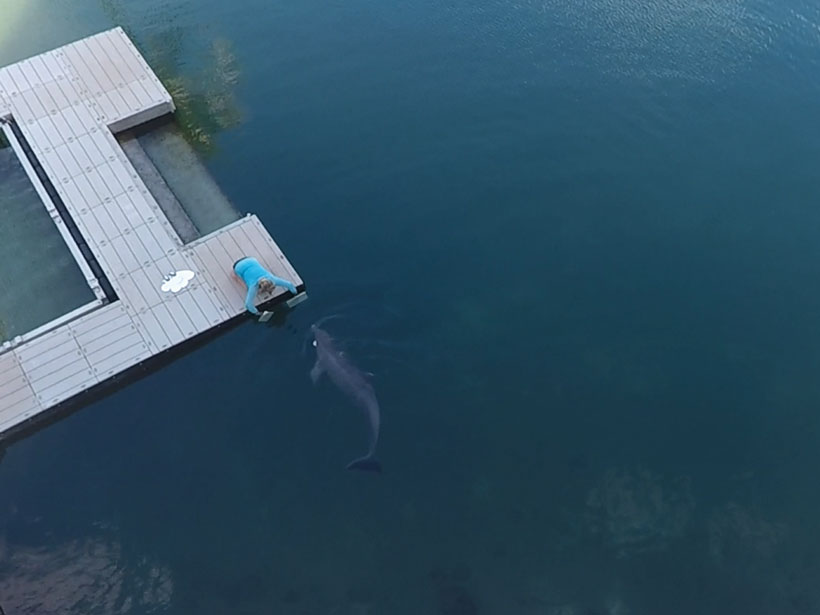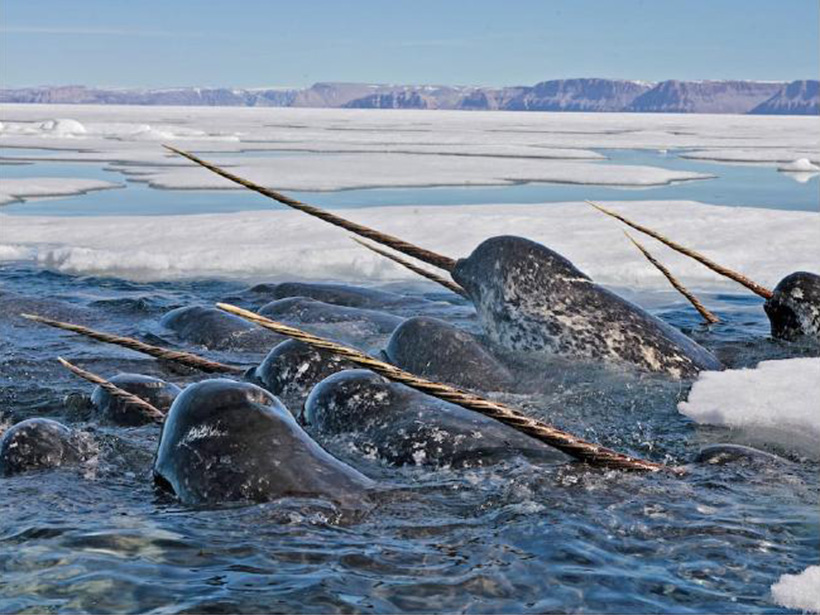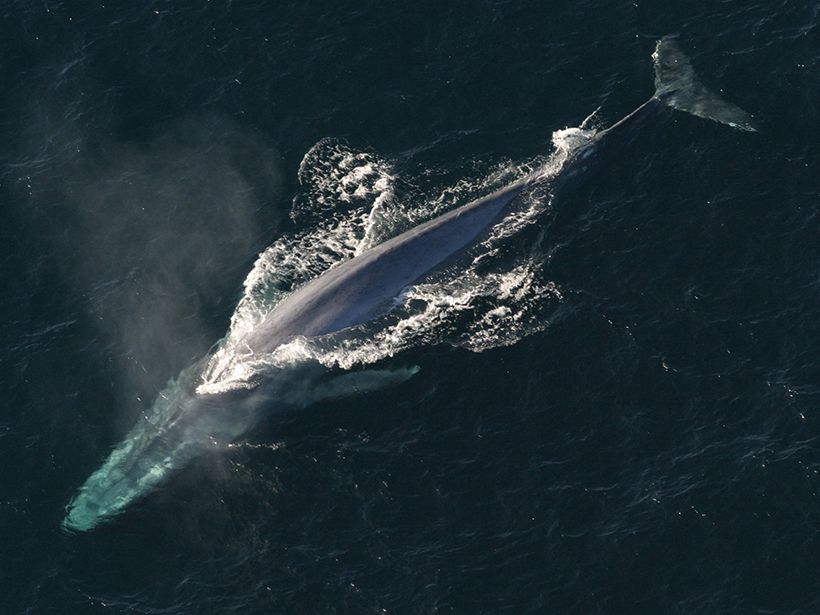A team of researchers at the University of Michigan is looking to animals to find new ways for autonomous vehicles to navigate through the environment.
whales & dolphins
Narwhal Tusks Record Changes in the Marine Arctic
This new paleorecord can help scientists better understand how climate change and human activity are changing marine mammals’ environments and habits.
Geomagnetic Storms Probably Don’t Cause Mass Cetacean Strandings
Solar-induced geomagnetic activity and mass strandings of whales and dolphins on shorelines both show seasonal patterns, but the beachings likely result from multiple environmental factors.
Seasonal and Annual Changes in Pitch in Blue Whale Calls
Six years of acoustic recordings detect seasonal shifts in blue whale vocalizations that correlate with the presence of icebergs, a primary source of ambient ocean noise in the southern Indian Ocean.
Dolphins in Florida Show Exposure to Phthalate Contaminants
Scientists have detected exposure to phthalates among a majority of bottlenose dolphins sampled in Sarasota Bay, Florida (2016–2017), including some with levels comparable to those observed in humans.





